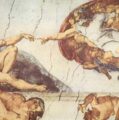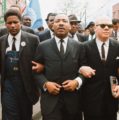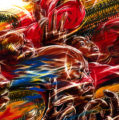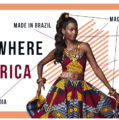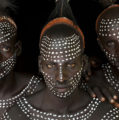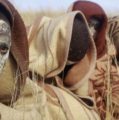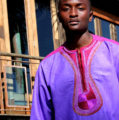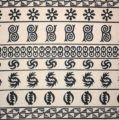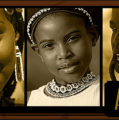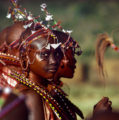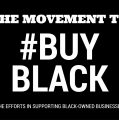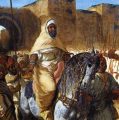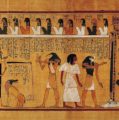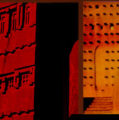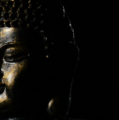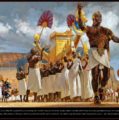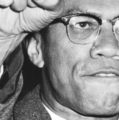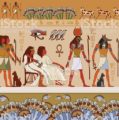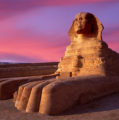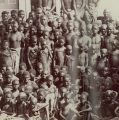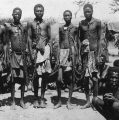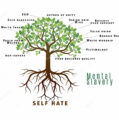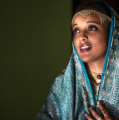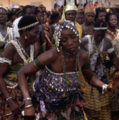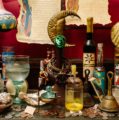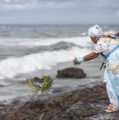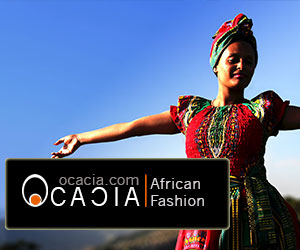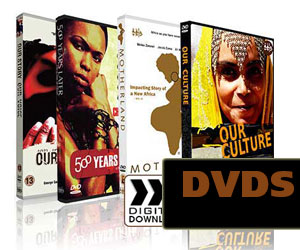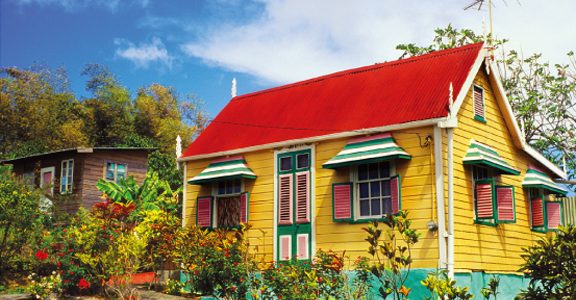
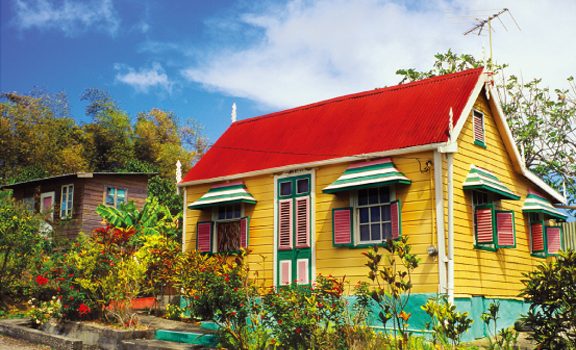

Africa and the Diaspora
How can I turn from Africa and live– Derek Walcott, Poet
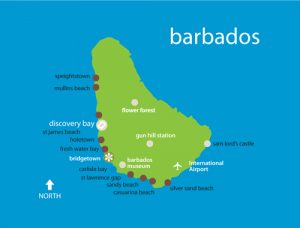
Map of Barbados
Welcome to Barbados – 21 miles long and a smile wide. Alfred has stolen one hundredth of my thunder by stating that Barbados has a unique history in the Caribbean in that the history of the Caribbean people is usually that there were Amerindian people (and we call them by the old terminology which North Americans now have ceased to use “Amer” meaning American and “Indian”, utilising the mistake of Christopher Columbus in seeing these people and calling them “Los Indios”, the “dark-skinned people” and thinking that he was in India).
So Amerindians inhabited these Caribbean territories, then came the Spaniards and Portuguese and there was a point in contact after which Africans were introduced and that occupied at least 50 years, in some cases 100 years, in some cases more.
So the African in the Caribbean has come to this region as the third layer of post-Columbian immigrants, but in the case of Barbados, the African arrived here with the Englishmen and as Alfred said at the beginning, we don’t know how it happened (the jury are still out) but the story which historians have accepted is that in 1627 when the “William and John” was traveling to Barbados with a colonising party of 80 Englishmen, they happened upon a Spanish galleon. At that time (according to Carl and Roberta Bridenbaugh) there was the concept of “No peace beyond the line”, meaning that there was continual warfare between England and Spain and, no matter what the situation was in Europe, whenever Spanish or English fleets met each other on the high seas past an imaginary line crossing the Azores, wherever they met beyond that west and south, there was hostility.
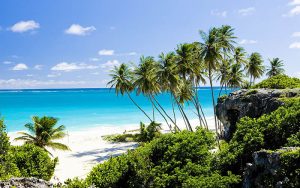
Beautiful Barbados
Our story goes that this English vessel under the captaincy of John Powell stopped the Spanish galleon and demanded whatever they had that was “merchantable”, to use the term of the day, on board. Of course they took stores, guns, jewellery etc and ten Africans who had been brought by Portuguese to Spanish territories, because Africans were here in the Caribbean from about 1522 as bond servants, as slaves, and the Spaniards were prevented from themselves trading in Africa for human cargo but the Portuguese could, therefore the Portuguese bought Africans to Spanish territories in the Caribbean.
The English took ten of them and landed 100 metres from here at Holetown, the Hole. I think that this lady’s book (Ann Watson Yates “Bygone Barbados”) does indicate where the Hole is and what it looks like. That little inlet is where the Englishmen landed of course it’s silted up much more now than it was 372 years ago. That’s where the English came ashore in Barbados, which reminds me to congratulate Alfred, Keith Simmons and others for conceptualising the Holetown Festival in 1977 to commemorate the 350th anniversary of the landing and now it’s 22 years later, the 372nd anniversary.
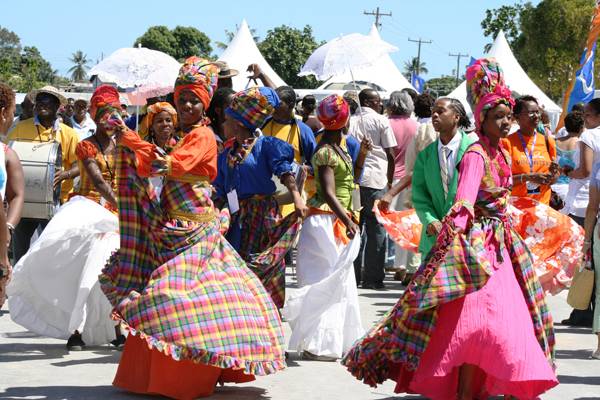
Traditional African culture
So the Africans, some ten of them, came to Barbados with the Englishmen in 1627. Thereafter they became enslaved. Immediately they were made into slaves, not by reason of any judge made law, but by the simple situation of having been captured and forced into bond servant work in perpetuity. That was 1627. The society was not intended to be for Africans but it was supposed to be a racially homogeneous one. Therefore one finds that these bond servants coming into Barbados, the drawers of water, cutters of tobacco and cotton, and the planters of the initial crops in and around this area were working-class Englishmen – the “dregs of society” as one contemporary writer claims – and that went on for about ten years until 1637 when there was a problem in England. The main crop coming from these “plantations” as they were called, tobacco, reached glut proportions because Virginia exported a superior quality and quantity of tobacco, and all of England’s Caribbean territories also produced and exported tobacco to England. There was not only a glut and a fall in prices, but these fledgling colonies then faced extinction. Then it happened, the event which changed forever not only the history of Barbados but the history of the entire Western hemisphere. I suppose we have forgotten about cane sugar a crop indigenous to New Guinea, which was known in India and in Europe. This extremely expensive delicacy, which apparently had been brought to the Caribbean by Columbus, now became exploited on a major commercial scale in this territory, Barbados. Sugar had been in Polynesia. Today Barbadians of all ethnic groups can be proud of the fact that the ‘sugar revolution’ as it was called, started here and that from 1637 onwards Barbadians experimented with the growing of a crop here and by 1645 they were exporting that crop to England. The experiment was conducted by a Dutch Jew resident in Brazil, Pieter Brewer who was brought over here to test the soil to see if the sugar cane would grow. These experiments were successful and from 1640 onwards one finds that the sugar cane plant is grown in Barbados on a large scale. Between 1640 and 1690, a period of 50 years Barbados became the single most valuable piece of real estate in the entire Atlantic world, bar none.
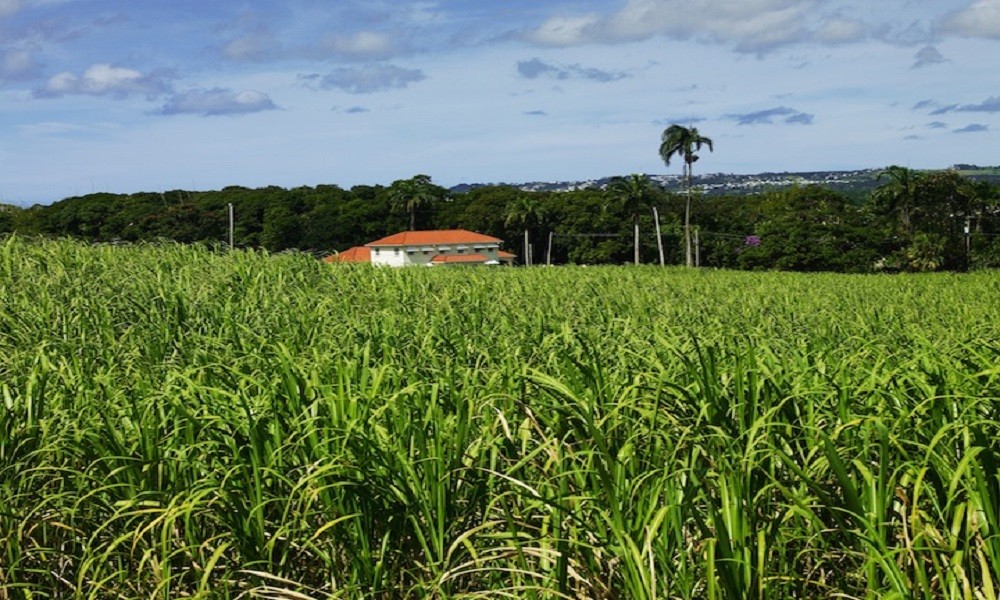
Sugar Cane and Slavery
You must understand why I say that and how this happened. Sugar 360, 350, 340 years ago was as much in demand as today as (and if you will pardon me if I say so) marijuana and cocaine, except that sugar was legal but the demand for these crops which were exotic, stimulating, sweet to taste etc, was fantastic and the demand was higher than productivity. The entirety of Barbados’ original forest was cut down, deforested to establish plantations, large commercial farms cultivating the sugar cane and exporting it to England. Out of that economic activity also came the rum industry and Barbados can also claim to have patented the production and export of rum from 1703. Certainly over a period of 50 years Barbados became extremely valuable because it was the first to produce sugar on a large-scale commercial basis and to export it to Europe. You will remember at that time England, under James 1 and Charles 1 and his successors, had become accustomed to the practice of taking tea, which is now a cultural signature of the English people and it follows therefore that the natural sweetener, sugar, should be available and when it became available the source of that sweetener was doubly valuable. This was Barbados and Barbados had a jump of 20 years on other sugar producers. Barbados started producing sugar and exporting it in 1640 – 1645. Martinique, Guadeloupe and other territories did not begin until after 1660. Persons seeking to discover the present-day prosperity of Barbados need seek no further. This country became the pristine, the quintessential, the archetypical sugar-producing territory and remained so up to just 40 years ago, when we underwent our second major revolution – the”Tourism revolution”
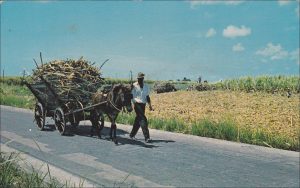
Horse and Cart
Key to this therefore was the presence of the African. In 1640 the population of Barbados was about 10,000, of which there were no more than 1,000 Africans. As I indicated it, was not expected that the African would become a permanent feature in this society and the initial work force was the young and landless from the English cities who served the bold and the wealthy. And then the brawny African became a feature when sugar became important. The African had been known Europeans from the time of Greeks, from the time of the Romans. The African, after all, was both slave and conqueror. The African was in Germany, the African was in France and more particularly in Spain and Portugal where Moors had conquered and colonised Spain for 900 years. He was therefore eminently qualified, according to the Europeans, for working in the fields and working in the tropical climate of Barbados, hence the large scale hemorrhaging, as people say, of Africa, where its young and able bodied persons as well as its weak, its old, its children were transported across the Caribbean to serve the interest of ‘King Sugar’. And that basically is the reason for the large presence of Africans in this society. By 1640, as I said, there were only 1,000 Africans in this society, a society of 10,000. Society increased eightfold and by 1690 Barbados was over-populated. It had 80,000 persons and whereas it had a ratio of 9 to 1 in 1640 in favour of Europeans – Englishmen, Scotsmen, by 1690 that ratio was overturned. Barbados now had 60,000 Africans and 20,000 more or less whites – Euro-Barbadian, British, English-Barbadians (as you know England does not become Britain until 1702 in the time of Queen Anne) and the number of Barbadian Blacks or Africans in Barbados continued to increase as the number of whites in Barbados decreased. By the end of the century there were about 90,000 people in this society and about 75,000 of them were African-Barbadian.
My collegues like Karl Watson and Ronnie Hughes have said that these people shed a lot of their African identity over the next two centuries and became “Barbadian”, so too the Euro-Barbadians and they coalesced not only in sexual terms to produce what Alfred says he is miscegenated or half-castes. Looking at him you would not know, but that grouping was called “mulattos” and the historians and others wonder what are they – European in features, phenotype hair etc etc but having African genes. They had quaint and queer terminology “mulattos” suggested that they were “little mules” in that they come from a donkey (which is an African) and a horse (which is a European) and that they could not reproduce normally and that they had to return to the matrix, either a full blooded African or a full blooded European to produce. To carry that joke a bit further, where you find a European and a African mating the product was a mulatto; a European and a mulatto mated, the product was an octoroon, one eighth white; if that octoroon mated with a white, the product was a quadroon, a quarter white; if a quadroon and a white mated, the product was a mustee which is, Alfred would be a mustee; and if that mustee and a European mated, the product was a mustifino, or seven eighths white (or as they said seven eighths human) and that process was called “washing the blackamoor white”. In Barbados therefore one can move from African to white in about three or four generations. But that is just by the way.
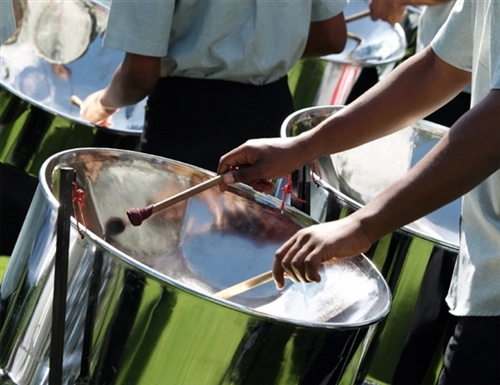
Steel Drums Culture
Our focus after this long introduction is what the Africans bought to Barbados. It has long been thought that the African brought to Barbados in those formative years of the sugar revolution nothing more than brawn and a pint-sized brain. Victorian ideology argued that there was the Darwinian process of evolution from beasts coming up from the swamp lands and evolving into Australopithecus, Java man etc etc and becoming Homo Sapiens and at some point there was a “missing link” between man and the monkeys, chimps etc and that was the African. That dominated a lot of scientific and pseudo-scientific arguments over the past 100 or more years and there is substantial refutation of that, suffice to say that it has been argued that the Africans are no less human than other people. So at the time the African came to Barbados and other places, the propaganda was that he had nothing but brawn and a pint-sized brain; that his society had contributed nothing to the noble heritage of mankind. This was part of the reasons used by Christians and others for enslaving him, because he was, after all, not a human being, he was a sub-human. Remember that Adolf Hitler utilised the same argument with respect to the Jews, that they were sub-human and had been a parasitic drain on society and they should be eliminated. All Europe from Portugal to Russia became involved in the slave trade, enslaved Africans and brought them to this region. They subscribed to the notion, at least officially, that Africans were sub-human, but as we see sexually Europeans did not subscribe to that belief. The African was not supposed to come from a society that had reading, writing or had contributed anything of major scientific note, and although Egypt is extremely firmly situated in Africa, it was argued by scientists (and is even argued today) that Egyptian civilisation is not African, it could not be. Africans could not produce the pyramids, those great temples at Karnak, papyrus writing etc. It was established that the typical African was in the Bantu-speaking people, of West Africa with woolly hair like mine, jutting jaws, thick lipped, and that they had not either the brains, intellectual tools or else to create a major civilisation.
This morning I won’t bore you with any refutation of that argument; suffice to say that a new generation of Egyptologists has engaged in substantial refutation of that notion. Let us look at the Bantu-speaking West African and what he brought to Barbados. He brought with him first of all a material culture. The Africans brought with them the ability to work in wood, stone, clay. They had established in areas like Mali and Ghana and so on, a cross continent trade with North Africa in salt, with East Africa in slaves, also in gold and ivory. There were parts of West Africa with workers in iron, that became the “Birmingham” of West Africa and of course they utilised reeds, plants etc and the hides of animals to make baskets, utensils for homes, for carrying, embroidery for their horses, which they domesticated, by the way. All of these art forms and artistic practices were brought by Africans to this Island. Women from Africa, these women came to Barbados in large numbers and were equally engaged in work on the plantation. Women brought with them almost all of the arts which they have today. Basketry was their main preserve and this was not their only preserve; they worked in calabash carving, embroidery, pottery, weaving, bead work, wall-painting, leather work and of course you know they did body decoration. Women’s work and men’s work occupied different spheres – men were engaged in hunting and cultivating the soil etc, women pursued the manual arts which I just described. Were they able to pursue these material and practical arts in Barbados? The answer is “yes”. Because Africans, in coming here along with the Europeans, had to establish a fledgling society. The initial buildings in Barbados were made of wattle and daub, therefore the African with his circular hut house technology was superbly equipped to help the Englishmen in establishing not only the simple grounding but also the initial sugar plantation great houses. Most of the plantation Great Houses were one storey edifices and they were not only built by the Africans in terms of labour, but they were designed by Africans as architects. Although we find that the first set of outstanding Great houses like ‘Drax’ Hall in St. George and ‘Nicholas Abbey’ six miles north and east of here, are of Jacobean architecture and a style which comes directly out of England, throughout the Caribbean and in some areas in Barbados (though these plantation great houses are no longer existing) one found single storey great houses and there is evidence of these looking like or coming from African-style houses. So the African did contribute to the material culture of Barbados. He brought a skill, a talent with an experience in masonry, carpentry. You think of Africans as Stone Age people, but at the time when the Europeans went to Africa to capture or buy them and bring them here as slaves, they had iron work, they had nails, there were carpenters, builders, designers. One must remember that out of the West African empires one had large cities, Timbuktu, Jenne etc which had three and four-storey buildings and Africans therefore had that kind of experience. Some of it was not utilised in Barbados because, after all, their purpose here was to hew wood or draw water, cut canes and load them and send sugar on to Britain but at least their material culture remained and they were given the opportunity to try again.
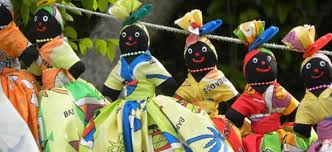
Bajan African Dolls
Moving swiftly on – the area of soil cultivation and crop production. This was a main contribution of Africans to Barbados for 300 years. Africans cut the canes, not only cut the canes, but they cleared the land; they built these roads and built those marvels of masonry, the Dutch windmills. It was they who lugged all of the heavy machinery, the iron rollers and the other machinery for the boiling house, the curing house, and who manned the plantations to produce the sugar crop. Africans truly ‘ran’ the plantations because the persons who came to Barbados from England, from Scotland, from Ireland, as supervisors and managers and owners of plantations, did not have that experience in tropical crop production. They therefore depended, as time went on, on Africans as under-managers, not even as under managers, as drivers, supervisors, in the field, as captains of the mills, as persons in the boiling houses. Some persons would come from England at aged 20/21 to manage a plantation of 3/400 acres and that plantation when they came here was a growing concern, prospering and when they left or died it was still that way. Clearly there was some other agency, some other dimension other than their innate skill or genius and that was the African presence here. When we look therefore at the African contribution to Barbados it seems trite, it seems self-evident, but here you see the presence of the African in the sugar industry. In the 19th century, about 100 years ago, an African Barbadian (and there is a debate over whether you call them Africans or Barbadians or African Barbadians, and you will be surprised to know that persons darker than myself resent being called Africans but that’s another story). One dark-skinned Barbadian, Iraneus Harper, a hundred years ago, was responsible for discovering that sugar cane could be reproduced from seedlings and that led to some intensive investigation and research by John Redman Bovell. Consequently, Barbados became one of the two places in the world (the other being Java) which developed sugar breeding and stations producing different crop varieties suited to particular soils and resistant to diseases and also to rats, mongooses, etc. So African work in agriculture was important.
In the arts (that is arts and crafts) here is another major area of African expression and African productivity and contribution. Perhaps the main area visibly that we can identify in arts and crafts is pottery, earthenware. Some 12 miles East of here is the Chalky Mount Pottery village and that is evidence of an expansive and extensive tradition of the ceramic art exclusively African. There is no evidence that the Europeans taught the Africans who were slaves ceramic art, the art of earthenware production. That pottery utilising no kiln, just a wood fire and using the iron pots for ‘open-hearth’ technique and technology, that practice of utilizing a primitive wheel or no wheel at all, has produced urns and the peculiar jars, which Alfred should have here such as the ‘monkey’, which kept water cool. They produced urns for keeping meat not only cool but well preserved (well-salted) for long periods. Every possible utensil that you can think of, plates, pots, cups, bowls, vessels for washing etc. were produced by African potters here and that tradition of producing for the household, for the market is also well shown in Ann Watson Yates’ book. Here is evidence of the pottery and of a marketeer, a woman, and this is the Wharf in Barbados about 100 years ago and that lady is having a pottery sale not only to Barbadians but to inter-island vessels and visitors.
Men and women were the potters, but this lady is marketing. The story of the African here in Barbados is one of men and women working together. When I talked about the African bringing brawn, it was not only male brawn but female brawn as well because in cane fields able bodied men and women worked together and there was activity as you can see there, in that wall painting; men and women using hoe cultivation, weeding fields and that has been a feature of our agriculture for over 300 years – women alongside men. So in pottery, in basketry, in needle craft, in weaving etc, the African brought those skills and those practices and products to Barbados. There was not so much painting until the 20th century, although we find petroglyphs which could be Amerindian or could be early African in some caves but we do not find wall daubs. In fact the tradition of painting in Barbados has only taken off in the last 15 or so years, prior to that it was an exercise of Europeans and North Americans and really could not be considered a major form in this island, but practices such as weaving cloth, peculiarly African practices, these were brought to Barbados.
We tend to think, and the literature tends to suggest, that Africans wore cast-off European finery, in the case of the mulattos and the lighter ones, and that the darker skins wore next to nothing, a loin cloth etc. But Africans in Barbados continued the West African practice of weaving their own cloth on primitive racks and making cloth and one has to say it died out because in this century one does not find much evidence of it, but it was here and it did exist during the slave period. So the materials arts were well represented and were continued. As I said pottery is the longest-standing in Barbados and the most evident of a strong and almost exclusive African tradition. Turning to other areas, when we talk about pottery we must talk about culinary arts and practices. Barbadian culinary tradition is African. Those of you who come here to find Yorkshire pudding, fish and chips or the roast beef tradition of England, will not find that. You will find that there is a tea-drinking tradition, but not just the English tea, which came from India, but the African Barbadians knew and called all brewed beverages “tea”, therefore there is a tradition of “bush teas”, the bush being the vegetation, the flowering and non flowering vegetation around the areas which had either medicinal qualities or nutritious qualities; and this they knew from Africa, therefore the beverage tradition of Barbados is essentially African. The patented teas were brought from England for the plantation management personnel, but the average African Barbadian drank bush teas, and Alfred is a great singer and he will probably sing for you the song about the 49 different bushes, flowering and non flowering plants from which African Barbadians made brewed beverages, not only for nutritive purposes but for medicinal purposes as well, both during the slave period and afterwards.
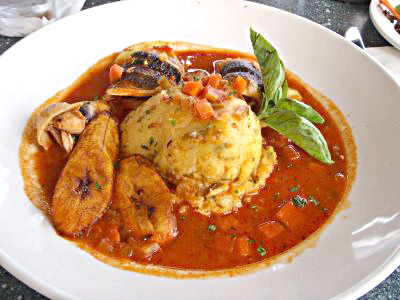
CouCou and Flying Fish
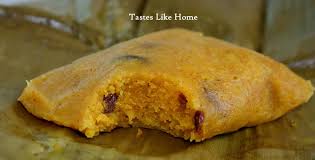
Conkies Barbados Sweet
In terms of food, as I said, our tradition is African, even Joan cooks cou-cou (spelt “coo-coo” or “cou-cou”). This is known as “fou-fou” in Africa and it is our couscous and it is a solid porridge, in fact it was called “lob lolly” in the beginning by Englishmen who ate it. It is made of cornmeal, the guinea corn which we call Indian corn or maize and it was stirred to a consistency like that of hard porridge and it was the first fast food in Barbados because it could be whipped up in about 20 minutes and produced or served on banana leaves. Corn is in itself a protein element, the meat protein would be crab or fish brought in from Canada and from North America, or around Barbados a lot of fish abounded. There is the flying fish which is native to Tobago but around here we call ourselves “the land of flying fish”. The strange thing is that the poor whites, whose story must be told next time, those persons who got lost in the in the struggle to build plantations, they had a long standing relationship with Africans in bondage and their culinary and other practices complemented each other. The poor whites fished, Africans farmed; the poor whites therefore traded fish for farines, for protein and for vegetables etc. We learn that African Barbadians were not allowed, by reason of being slaves, to go on the sea because perhaps some sailed away to St. Vincent and to freedom; that they depended on poor whites for their fish and we also learn that like the Africans in the United States and Canada, they utilised the cast-off elements in a slain animal – the head, the entrails, the hooves. They made food from the head and they made soup, ground the bones and made soup.
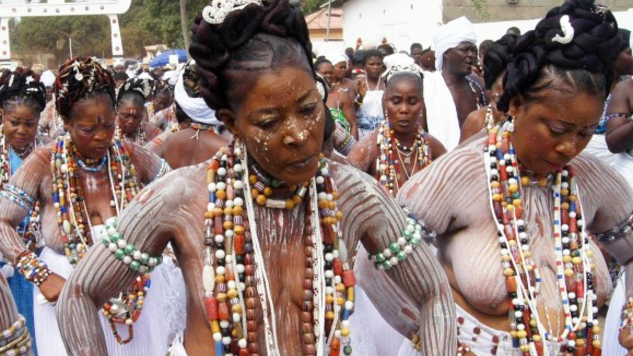
Togo: Dances, trances, the story of angry gods, and a mysterious sacred stone
The obeah men, the faith healers, ground the heads of animals to a fine powder and utilised it in their magical religious formulae, but fish head, cow head or sheep head etc. made a delicious soup. The entrails, the large intestines, the colon was stretched and ground potato, corn etc was put in it. It was cleaned and it became, not your Dutch sausage, but the equivalent of the Dutch and German sausage, called the ‘black pudding’ which is still a delicacy in Barbados, and tomorrow, Saturday, is the day when our African culinary heritage reasserts itself through the black pudding tradition. Saturday is the day because Saturday is the day of freedom from the hustle and bustle of the week in terms of culinary practices. During the week you have to more or less depend on the fast food, the rice from Italy, from the United States, whatever meat you could put together in a hurry. Two reasons, Saturday was the last day of work and a day of relaxed working; it was also the climax of the exercise of cleaning and preparing the entrails, because remember that the solid waste went through that and you had to clean it totally so that no gastro-enteritis occurred as a result of using it. So that exercise of cleaning and preparing the large intestine for a food took three to four days, utilising salt and lime and cleaning it and letting it soak and become pickled in that lime and totally cleaned and sterilised, so that took a few days. So by Saturday it was ready. I know that my sister is making more money out of selling black pudding than I am making as a lecturer, I have two degrees etc etc and she doesn’t and she makes more money out of that. It is an African tradition which continues and is increasing in popularity.
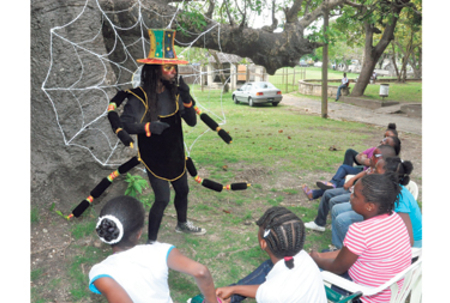
Anansi the spider
The African traditions are replicated in Europe and they were transferred to America; America is after all a transfer civilization. I think it might be a fruitless exercise trying to establish the original provenance, whether it came from Africa or Europe. It could be a simultaneous development. What we do know is that in Barbados it was African-Barbadians who used head and belly of the slain animals otherwise they would have been thrown away by the Europeans who used the prime cuts. The culture of poverty meant that the slaves were materially poor, they depended on their masters and they also had to eke out a living by utilising the bushes for brewed beverages and by utilising head and belly and the entrails and the hooves of the animals which were slain. Wherever you have had a slave tradition or a slave population in the Americas where the necessity of having meat protein has driven them to killing rodents, lizards, iguana etc which the European literally did not use, and utilising European cattle, African sheep, goats, any and every animal and even chickens, the steppers, the feet of the chicken have been utilised by Africans as a source of meat; every part of the chicken including the head.

